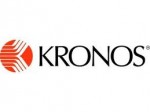This interview is an excerpt from our recent guide, Top Challenges & Solutions From State and Local Governments, which examines 16 case study examples transforming the way government safeguards information and technology.
In the late 1880s, a jeweler in Auburn, New York invented a rudimentary time recorder – the clocklike device that represented the first foray into mechanical employee time record tracking. According to the inventor, William Legrand Bundy, the time recorder provided each worker a specific key they would use to stamp the date and time onto their time cards. For more than 100 years, many organization including state and local governments continued to track time in a similar way, by punching the time clock and filing reports manually using paper and spreadsheets to log hours.
Today, technology has changed the way we do so many functions at work, but surprisingly, tracking employee hours is often still done the old-fashioned way.
“In 2015, a lot of state and local governments are still doing time and attendance scheduling on paper,” explained Rock Regan, Director of Strategy for Public Sector & Education at Kronos, a leader in the field of workforce management. “Tracking labor hours is a manually intensive process that lends itself to mistakes that can cost an organization millions.”
However, the emergence of new cloud-based technologies is finally rendering the manual processes obsolete. GovLoop sat down with Regan to discuss how the cloud is impacting these processes and bringing them into the 21st century.
Kronos uses the cloud and other technology tools to automate the tracking process. “We take all of those spreadsheets out of the equation. We take the paper out of the equation,” said Regan.
By eliminating paper, organizations using Kronos’ workforce management system can streamline internal processes and reduce the staff needed to verify the accuracy of timecards. For example, in one year, the city and county of Denver, Colorado reduced its payroll staff from 80 to 35 employees. The reduction resulted in a $1.5 million in cost savings. “They needed less people to manually approve pay cards. For the city the technology was a win-win, they had far fewer errors and were able to cut staff and save money,” said Regan.
Automating employee timecards is only one part of Kronos’ workforce management approach. The system can also take into account an employee’s credentials, mandates and restrictions. For certain state and local government employees, especially in the fields of public safety and corrections, scheduling can be incredibly complex.
For example, the California Department of Corrections had a difficult time scheduling correctional officers because the department needed to make sure that if somebody is out, they are replaced with an equally qualified officer.
“A lot of the different types of prison work require different skills and certifications. Our system takes those skills and certifications into account. The system will allow the correctional officers to do their scheduling,” explained Regan. “Using our system, California Department of Corrections has an enterprise view of their workforce for the first time. They’re able to look at their workforce and schedule it in a way that brings the right people with the right skills to the right facilities in real time.”
The California Department of Corrections is poised to achieve $1.5 million in annual savings through greater accuracy and efficiency.
Having an enterprise view of an organization also helps with organizational transparency and budget clarity. “Information like salaries and overtime are a big part of the transparency movement because citizens want to know how their tax dollars are being spent,” said Regan.
“Citizens are going to ask why a department is consistently recording hours of overtime,” Regan said. “Our workforce management system automates that process so we can track trends, and discover in real time which parts of the organization’s overtime methods are good and which deserve further investigation. We can use analytics to highlight problem areas. If you tried to do that in a manual process it could take weeks, if not years to uncover those kinds of trends.”
In addition, since no two state governments or localities are alike, the Kronos system is designed for each individual user.
“The beauty of Kronos is our solution is really built to implement those state and local specific workforce compliance mandates into the system from the start,” explained Regan. “California workforce laws are very different than those worker rules in New York or Massachusetts. When we go into California, we understand that they have very specific rules. We’ll build those compliance reports into the workforce system.”
Time recorders have certainly come along way since Mr. Bundy’s jewelry store. And as citizen and demands remain high and the public sector looks to become ever more efficient, cloud-based workforce managements solutions are leading the way.






Hi! I think time tracking is crucial for costs estimation and improving productivity of the team. When my firm didn’t track time we had no idea how much time we waste on various unproductive actions. Some time ago we installed TimeCamp and results are shocking. We were losing almost 1 hour a day per employee on online shopping, social media, games, etc!